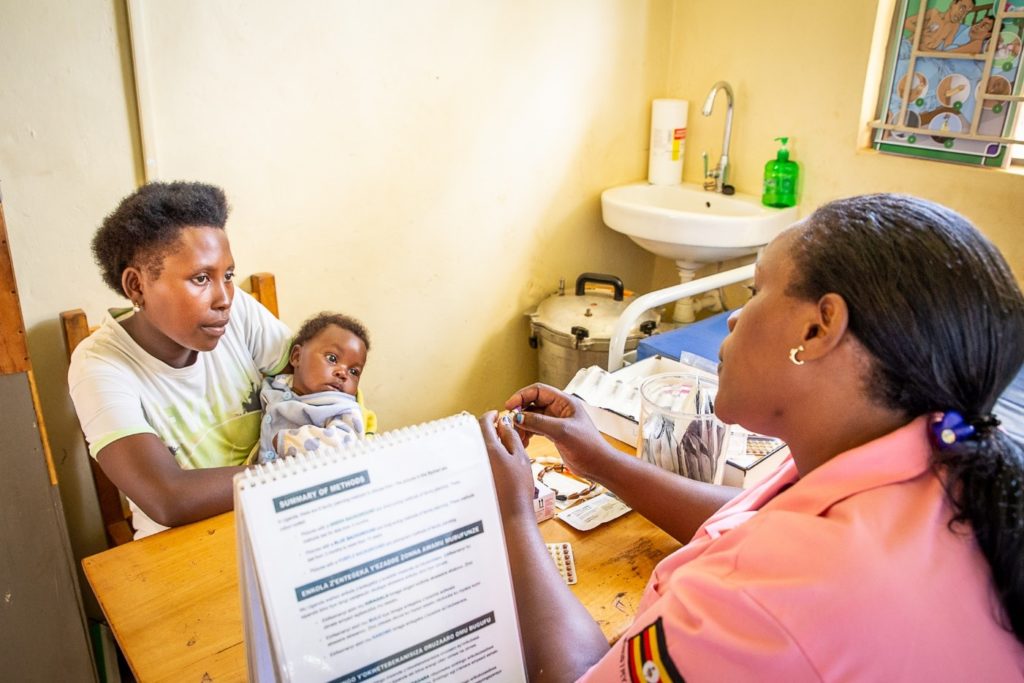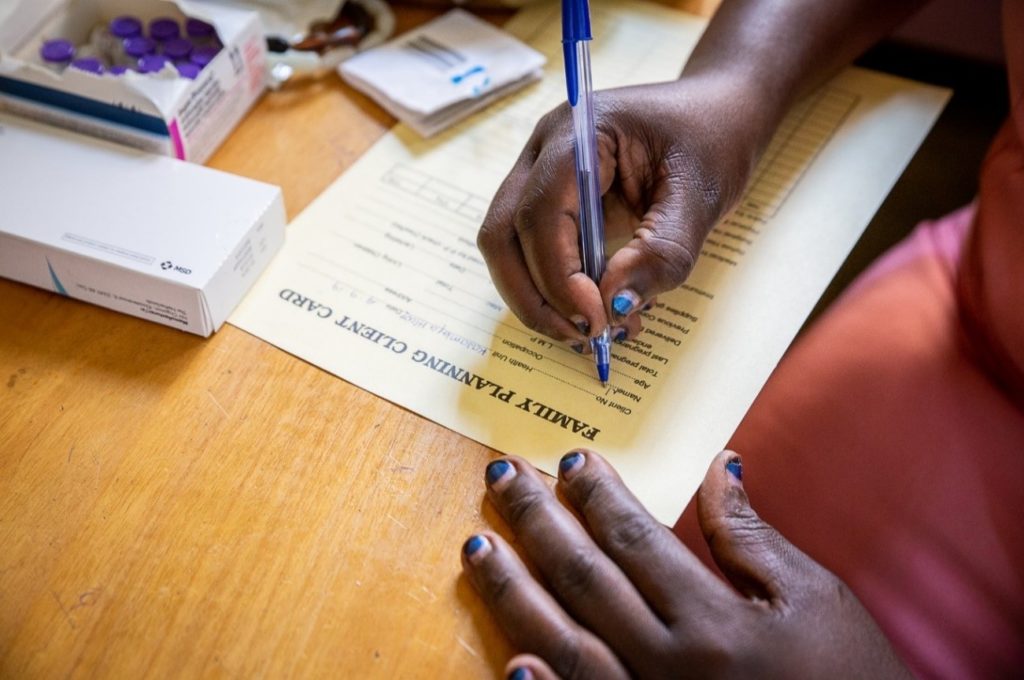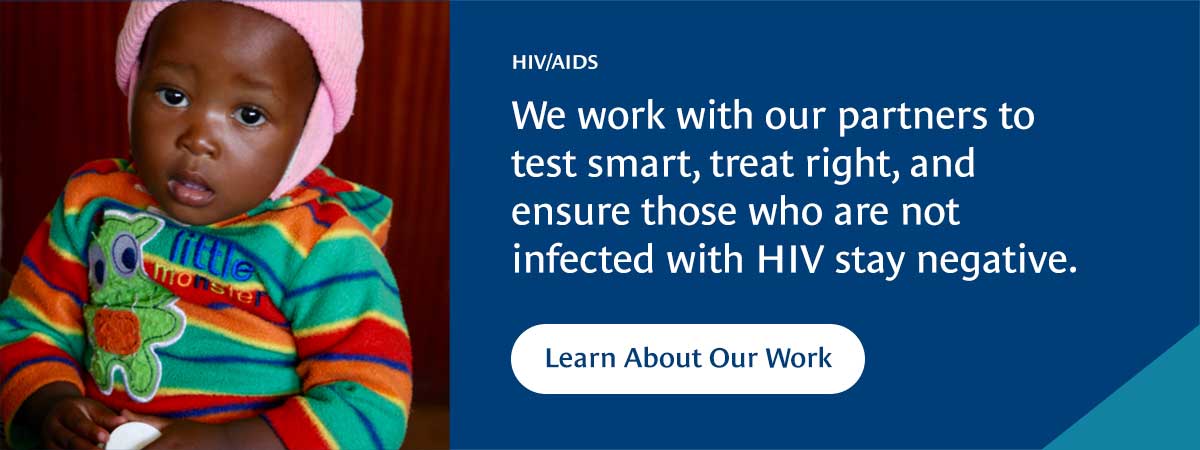CHAI presents cost-effectiveness modeling framework at IAS 2021 to understand the role of multipurpose prevention technologies in HIV prevention and family planning. Full lineup of CHAI IAS sessions here.
By the age of 18, a woman in Zimbabwe is likely to be sexually active. She may wish to prevent pregnancy for the next several years, so she initiates oral contraceptive pills at a family planning clinic, the most common modern method used in the country. However, she is not able to negotiate condom use for protection from HIV and other STIs in most sexual encounters, and, like other adolescent girls and young women across the region, is highly vulnerable to HIV.
Six out of seven new adolescent infections (aged 15 to 19 years) in sub-Saharan Africa are among girls, and women across the region bear a disproportionate burden of the epidemic, accounting for 60 percent of new infections in 2020 according to UNAIDS data. Despite expanding contraception coverage in recent years, there is also significant unmet need for family planning, with an unintended pregnancy rate of 91 per 1,000 women per year in sub-Saharan Africa, the highest rate of any region in the world. These statistics suggest a clear need for additional prevention options which center women’s diverse needs.

A nurse counsels a mother about family planning at Kasambya health clinic in Uganda.
How can women protect themselves against HIV and unintended pregnancy?
Multipurpose prevention technologies (MPTs) are products which address two or more health issues. Condoms, which prevent unintended pregnancy and STIs, including HIV, are perhaps the best known example of MPTs. However, as many women cannot guarantee condom use, the development of new MPTs is critical in meeting their sexual and reproductive health needs.
One such MPT – the Dual Prevention Pill, or DPP, a daily oral pill, is currently in development for HIV prevention and contraception. Should the product receive regulatory approval, the DPP is positioned to be the first MPT to reach markets since male and female condoms. As a single product, the DPP provides the opportunity to integrate HIV prevention and family planning services. As a daily pill, the DPP provides women with the autonomy to decide when and how to space their pregnancies and protect themselves from HIV.
With support from the Children’s Investment Fund Foundation (CIFF), and in partnership with AVAC, Mann Global Health, and other partners in the DPP Consortium, CHAI is working to accelerate development and introduction of the DPP to pave the way for future MPTs.
With a wide range of contraceptive options available, and a growing portfolio of HIV prevention products, it will be crucial for decision-makers to understand how the DPP, and other pipeline MPTs, will fit into an increasingly diverse product portfolio, while achieving the greatest impact on health. Cost-effectiveness modeling, which compares the relative costs and outcomes of different courses of action, is a critical part of this process.
Robust cost-effectiveness modeling will enable governments, donors, communities, and other stakeholders to evaluate financial trade-offs with health benefits for MPTs. Understanding the role of MPTs within both HIV prevention and family planning services will help ensure women have access to an array of safe and effective options to meet their sexual and reproductive health needs.
Cost-Effectiveness Modeling for the DPP and other MPTs
As part of the DPP Consortium, CHAI developed a methodology framework to inform cost-effectiveness modeling for the DPP and other pipeline MPTs, that on July 19th at IAS 2021 for a satellite session focused on the opportunities created by bringing the DPP to market. The framework outlines key considerations for cost-effectiveness model design and conceptualization. Importantly, to effectively inform decision-making, modeling will need to bridge methodologies from both the HIV and family planning worlds. For example, to optimize program design, stakeholders will need to understand the health impact of the DPP both in terms of HIV infections and unintended pregnancies averted. Further, combining health outcomes through a single metric will help inform health system-wide decision-making and evaluation in broader health budgets. Modeling will also need to account for existing risk factors for HIV and unintended pregnancy, including HIV prevalence, contraceptive coverage and method mix, and coverage of existing prevention interventions.

A nurse fills out a client family planning card at Kasambya health clinic in Uganda.
Planning for MPTs: Next Steps
While the DPP is likely to be the next MPT to reach markets, many other products are in development, including vaginal rings, gels, and implants. The framework that CHAI developed will be able to aid family planning and HIV decision-makers to align their needs with the right products as new MPTs roll out.
MPTs have the potential to transform the lives of women by preventing unintended pregnancy and HIV acquisition through a single product. A portfolio of safe and effective HIV prevention and contraceptive options is critical to enable meaningful choice and to develop more people-centered health services. Advanced planning for pipeline MPTs through robust cost-effectiveness modeling is one important part of ensuring these products are rapidly and efficiently introduced to meet the needs of people at risk.






